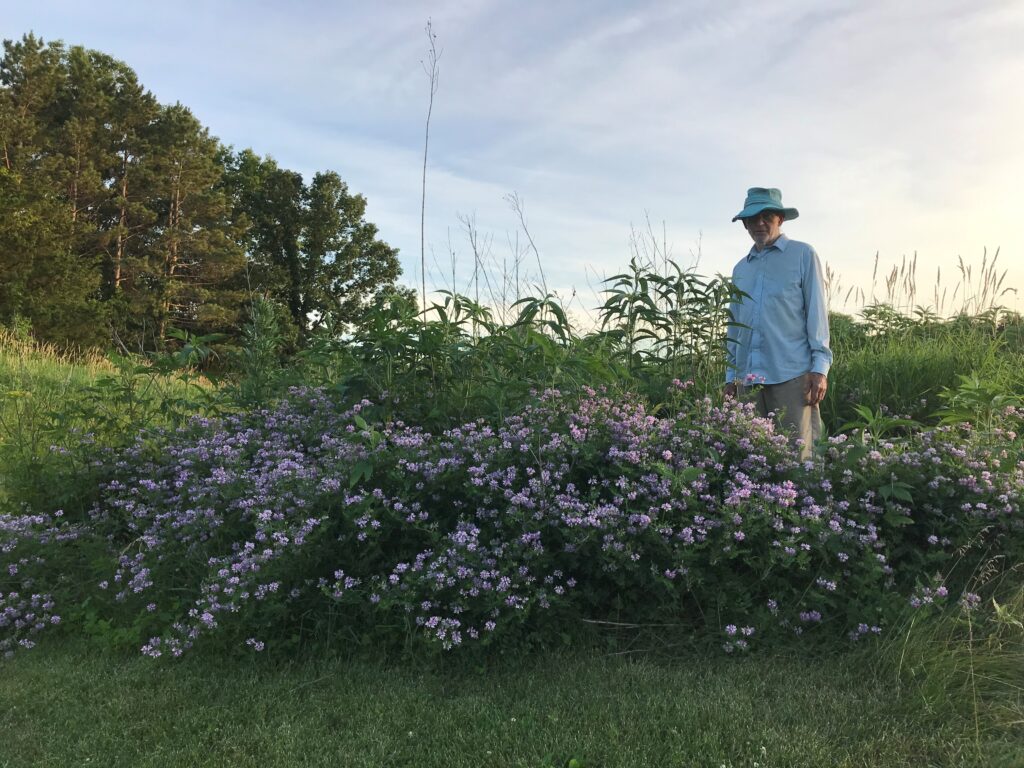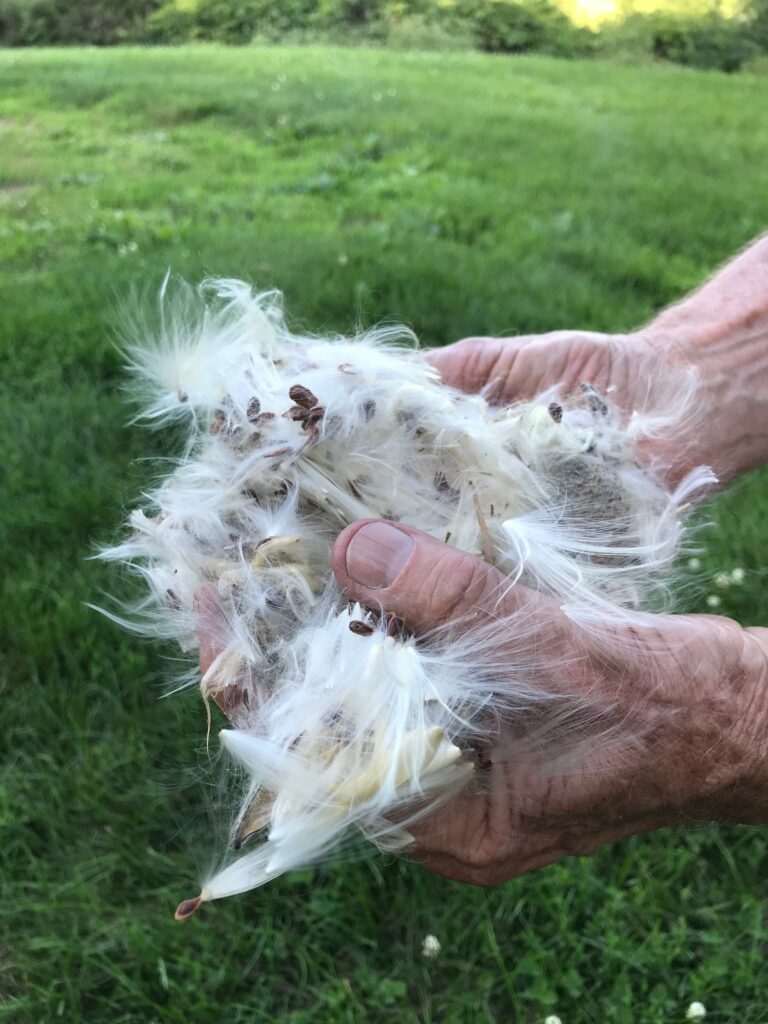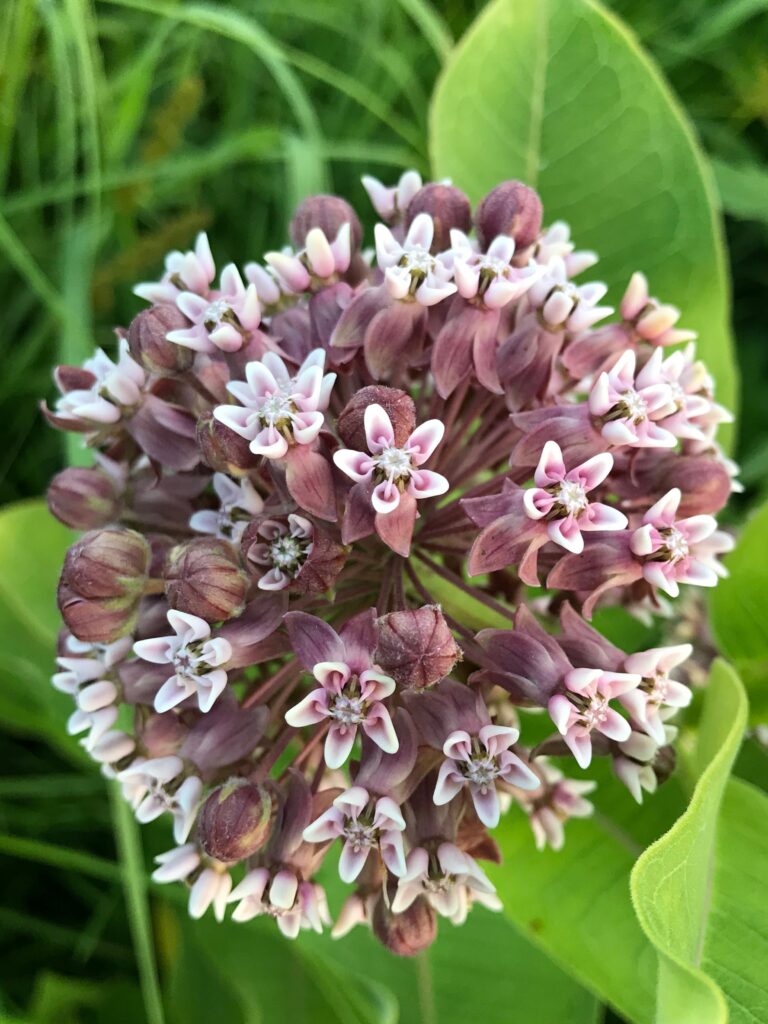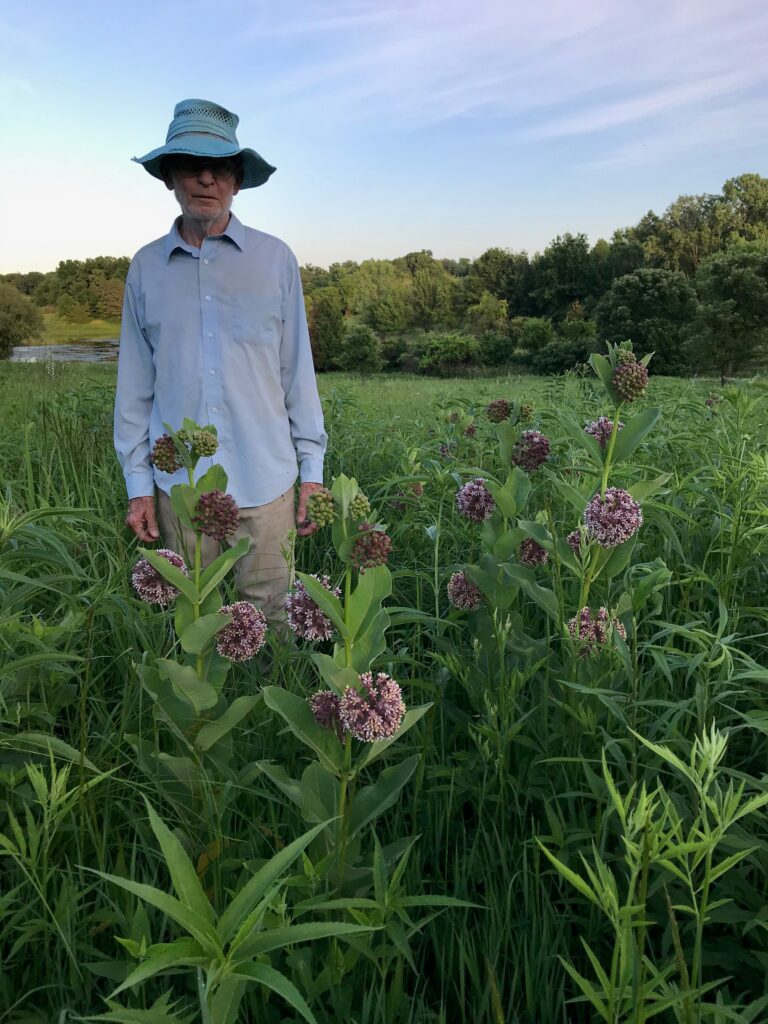Replacing Crown Vetch with Milkweed
Crown vetch is one of our most difficult invasive species to eradicate from a prairie, whether original or recreated. In a woodland, the shade weakens it and it doesn’t thrive. In a wetland, it’s taproot decays. But it is perfectly adapted to prairie, with a substantial taproot unharmed by fire even if the green top burns off. The viney branches weave through the surrounding prairie plants so it is difficult to even spray all the vines with herbicide, and in the process you also kill the patch of prairie. If the crown vetch flowers go to seed, the mix of seed includes “hard seed” which can remain dormant for a decade or more, awaiting some signal that it is time to sprout and grow.
Our neighborhood has patches of crown vetch scattered all about, far beyond my ability to deal with them, so it is inevitable that occasional seed winds up in my prairie restoration. I usually don’t notice it until the flowers start poking up through the prairie plants in midsummer, and by then the vines are already tangled through the prairie. Little choice remains but to nuke it with Roundup herbicide and hope it hasn’t already started shedding seed. If I do find seedpods, I try to burn the dead patch as soon as it dries out.
If then left alone, the following year the kill zone is an invitation for pioneer species to move in and take over, many of which are undesirable aliens. But I have found that I can make this situation more productive by gathering seed from common milkweed as soon as it is ripe and beginning to blow in the wind, and scattering it over the dead zones.
My preferred method for clean, burned ground is to mix up a few inches of thin mud in the bottom of a bucket, stir in the seeds, and throw handfuls of the muddy mix around the dead zone. The seed stays where you throw it and I think it gains some protection from birds and mice just by looking and smelling like a bit of dirt, as well as gaining improved soil contact.
By the next year, some of my crown vetch dead zones will have become patches of common milkweed, ready for monarch butterflies. Instead of just being a nuisance problem, invading patches of crown vetch can be turned into an opportunity to grow a useful native pioneer species, which can then become a seed source for next year’s problem/opportunity.






